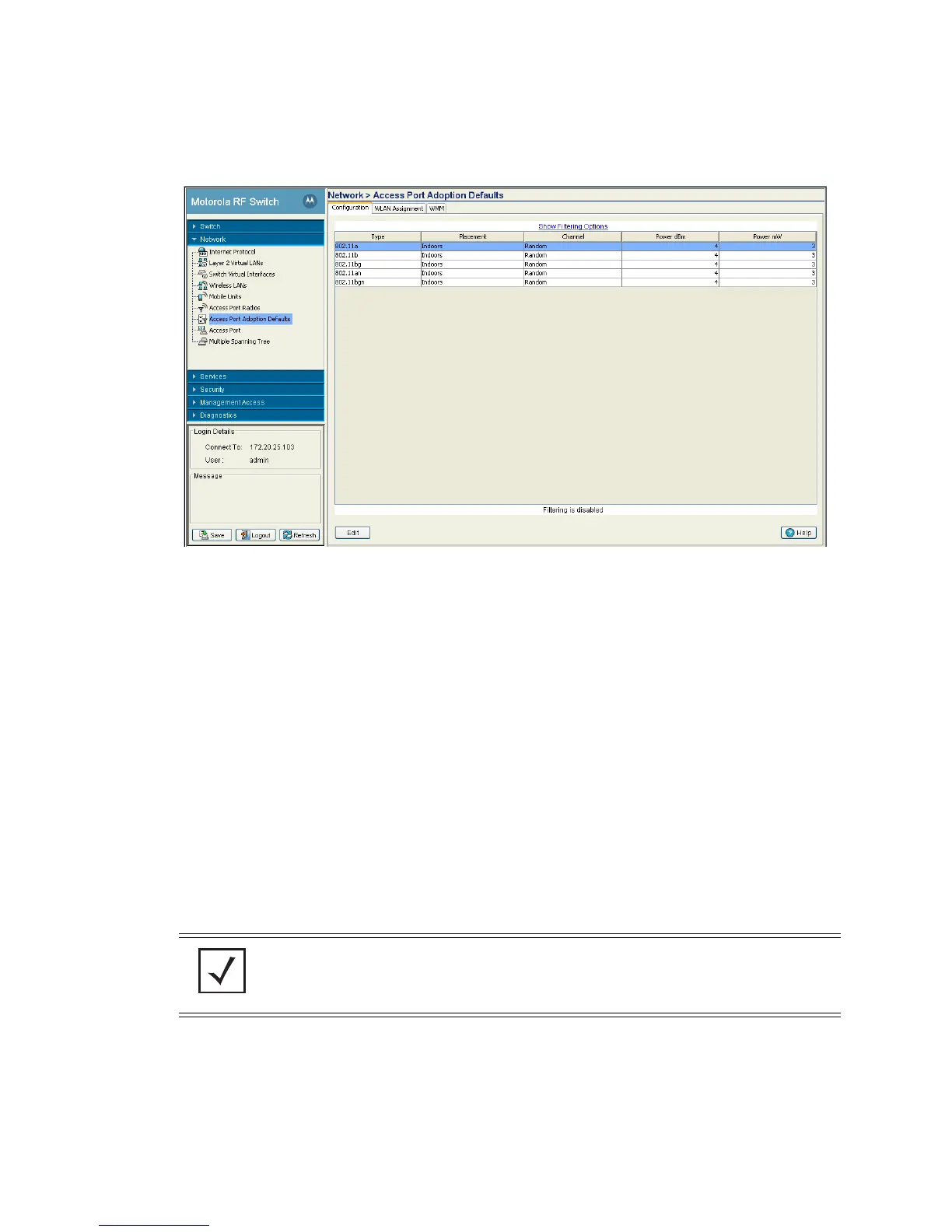Network Setup 4-131
1. Select Network > Access Port Adoption Defaults from the main menu tree.
2. Click the Configuration tab.
3. Refer to the following information as displayed within the Configuration tab:
4. To modify a radio’s adoption defaults, select a radio and click the Edit button. For more information, see
Editing Default Access Port Adoption Settings on page 4-132.
Type Displays whether the radio is an 802.11b, 802.11bg and 802.11bgn or 802.11a and
802.11an radio.
Placement Displays the default placement when an radio auto-adopts and takes on the
default settings. Options include Indoor or Outdoor. Default is Indoor.
Channel Displays the default channel when an radio auto-adopts and takes on the default
settings. This value can be a specific channel, Random, or ACS. Random assigns
each radio a random channel. ACS (Automatic Channel Selection) allows the
switch to systematically assign the channel. Default is random.
Power dBm Displays the default power when a radio auto-adopts and takes on the default
settings. Defaults are 20 dBM for 802.11bg) and 17 dBm for 802.11a.
Power mW Displays the default transmit power in mW (derived from the Power dBm setting).
Defaults are 100 mW for 802.11bg and 50 mW for 802.11a.
NOTE: Up to 256 Access Ports are supported by the RFS6000 and RFS7000 switches. Up
to 6 Access Ports and 24 Adaptive APs are supported by the RFS4000 switch. The actual
number of Access Ports adoptable by a switch is defined based on access port or Adaptive
AP licenses and on a per platform basis and will typically be lower than 256.
